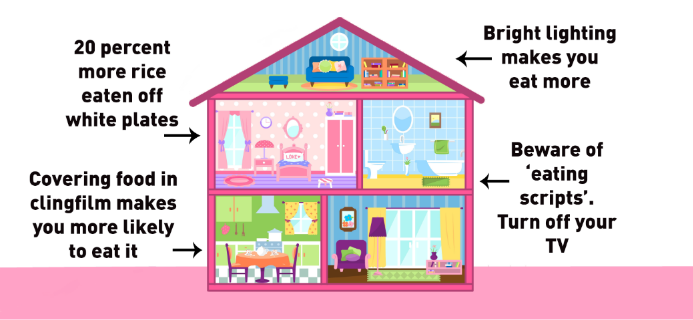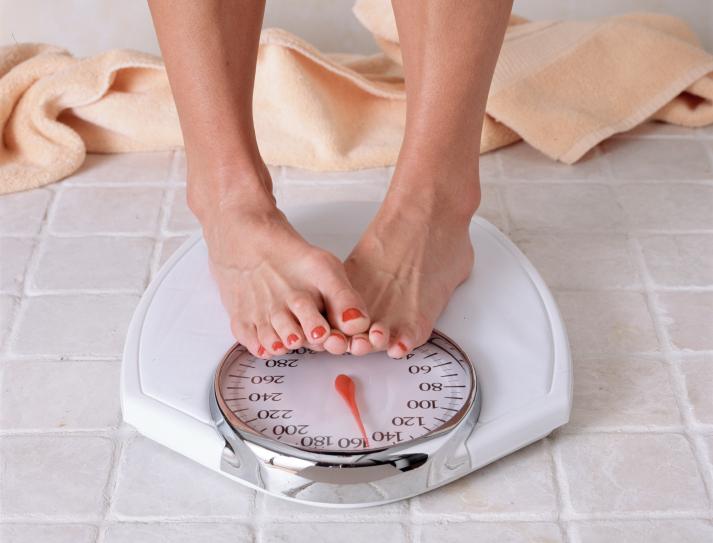You watch what you’re eating, you exercise regularly, you do all the right things. So why aren’t you losing weight? Anna Magee explores how that trusting safe haven you call home could be making you fat.
Your home is your castle right? Well, yes but if you’re having trouble losing weight, it may also be a haven of tiny cues encouraging you to eat more. ‘At any one time there are two things influencing our behaviour, the things we do consciously and the things we do automatically,’ says Dr Laura McGowan, a chartered psychologist specialising in adult food choices at the Health Behaviour Research Centre, University College London. Quite a lot of our eating eating habits fall into the automatic category, she explains. ‘But like a supermarket is laid out to engineer us to buy certain foods, you can make subtle changes to your home so you make better eating choices.‘

Believe it or not, the average person makes a staggering 200 food decisions a day, according to research at Cornell University in the US. ‘Most people are unaware of the food decisions they’re making,’ says Dr Brian Wansink, who led the research and is the author of book, Slim By Design, about turning your home into a healthy haven. ‘As a result it’s easy for our environment to influence us without us knowing it. We can make subtle changes to our homes to make this work in our favour and encourage healthier habits.’ Here are some of the simple changes you can make to your home to help it help you lose weight!
IN THE KITCHEN
Store smart
‘The more visible a food the more attractive it is,’ says Dr Wansink. ‘So if it’s unhealthy store it in containers you can’t see through and if it’s chopped vegetables and other healthy fare, use a transparent container.’ Cover healthy leftovers in cling film and Sunday’s chocolate cake remainders in foil. ‘If you can’t see it you’re less likely to eat it.’
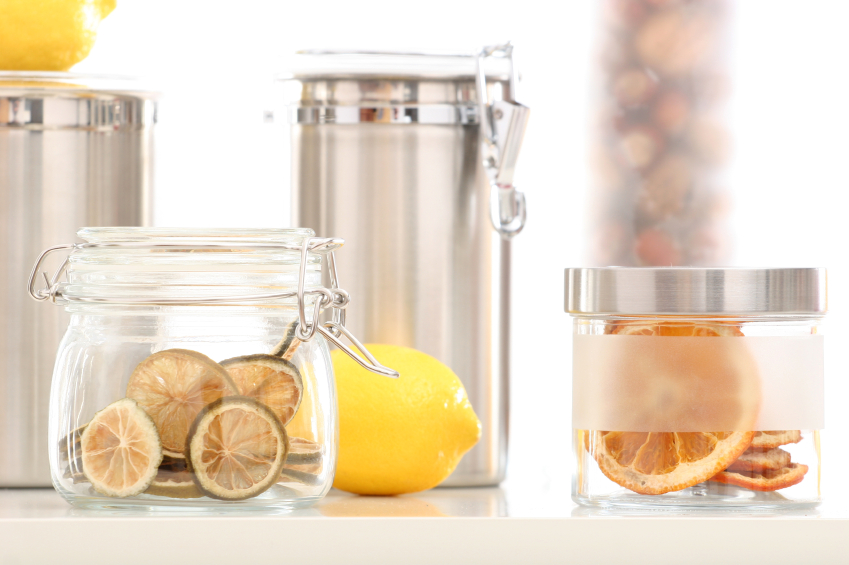
Decant!
Making better food choices is about making the healthy option easier, says Dr MacGowan. ‘We get bombarded by ‘buy one get one free’ or bulk buy options that are more economical in these straightened times,’ she says. ‘If you decant something into smaller containers or individual portion sizes, you’re less likely to overeat it because having to open a second portion acts as a break switch. Plus, research shows people are usually as satisfied with less.
‘If you can’t see it you’re less likely to eat it’
Put it away
If you cook a big bolognese dinner for four but have made enough for eight, store half of it away in a container before you sit down to eat. ‘You’re more likely to go back for more if you know there’s more still sitting in the pot,’ says Dr MacGowan.
THE FRIDGE
See it, eat it
‘If we can make our environments help us make more consciously healthy food choices more often, over time they become habitual and before you know it, you’ve replaced a bad eating habit with a healthy one,‘ says Dr MacGowan. One way is to make healthy snacks visible and hide unhealthy ones (or keep them out of the house, though that’s not practical if you have teenagers!). ‘If you always snack on sweets from the jar on the kitchen bench, move it to the back of the cupboard and set up a fruit bowl on there instead,’ she suggests. Give yourself fast access to healthy choices. Instead of buying a packet of carrots that need to be chopped and peeled, buy them prepared or opt for ready-to-rinse-and–eat vegetables such as cherry tomatoes that need no preparation, she suggests.
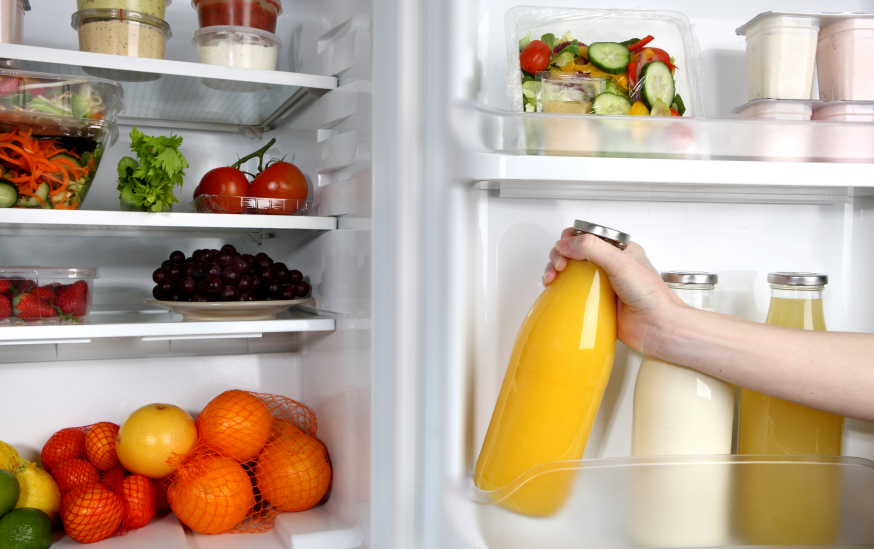
Note to self
Planning to hit the gym three days next week? Get the idea onto paper then put it on your fridge. ‘Committing a goal to paper and sticking it on your fridge is what we call ‘implementation intention’,’ says Dr MacGowan. ‘Include exactly what, where and when you’re going to do it and that in itself can help you enact on your decisions.’
SHOPPING
Shop online
That online grocery service you’ve been using may be delivering more than convenience. A pilot study from the International Journal of Behavioural Nutrition and Physical Activity found that people who do their grocery shopping online make healthier choices. ‘Buying online means people often buy less high fat food and are more likely to plan out their meals, a crucial element of a healthy lifestyle,’ says Miriam Mullard, a state registered dietician and spokesperson for the British Dietetic Association (BDA).
the average person makes a staggering 200 food decisions a day
AT THE TABLE
Skinny crockery
We’re often told to eat off smaller plates but Dr Wansink’s team found they can be too small. ‘People eating off plates with a diameter of eight and half to nine and a half inches ate around 22 per cent less than those that ate from larger plates,’ he explains.
‘But when we gave them much smaller plates they went back for seconds!’ To eat less, also choose plates that contrast with the colour of what you’re eating, he advises. ‘Serving rice on a white plate led to people eating 20 per cent more so rice and white foods on darker plates and darker foods on lighter plates could help you eat less,’ says Dr Wansink.
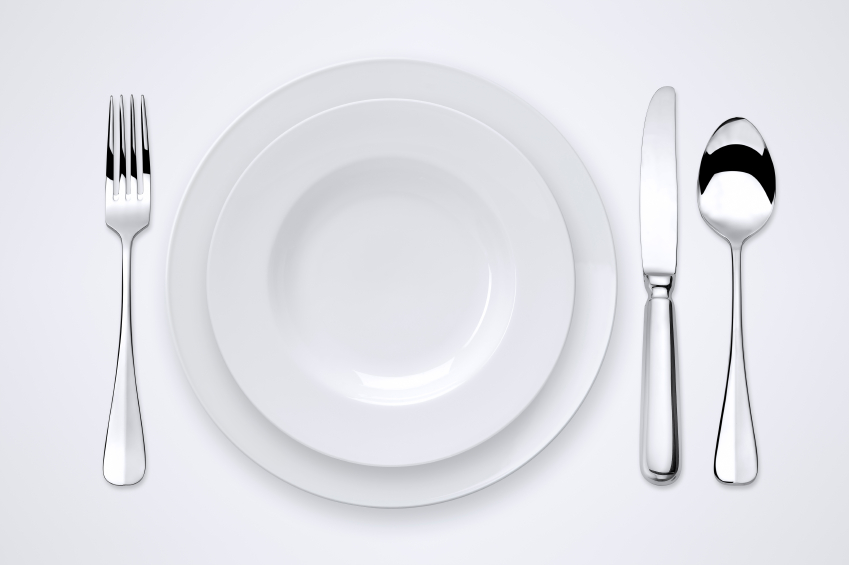
Choose tall glasses
Pouring a drink? Make it tall and long. ‘People drinking from a tall, narrow glass tend to drink less than those that drink from short, wide tumblers,’ says Dr MacGowan. ‘It’s a visual trick in which having a tall glass makes people think it’s more so they put less liquid in.’
Set the scene
Music and lighting can not only set a romantic scene, it can also make a healthy one. In One of Dr Wansink’s experiments people in a fast food restaurant listening to soft jazz by Miles Davis ate 18 per cent less food than those listening to classic 70’s rock and roll. ‘The louder and faster the music, the more and faster you eat,’ says Dr Wansink. Keep your dining room lighting medium too, he suggests. ‘Bright fluorescent lights or lighting that was too dark both made people eat more,’ he says.
white foods on darker plates and darker foods on lighter plates could help you eat less
Serve smart
We sometimes hear advice about using small cutlery to lose weight. That’s wrong, says Wansink, who found smaller forks made people take longer to eat the same amounts. ‘The only place silverware makes a difference is smaller serving spoons,’ he says. ‘We found that if you reduce the size of an ice cream serving scoop for instance, people served themselves 14 per cent less ice-cream.’ Also, once you’ve served the portion onto your plate, put the rest of the food out of sight or move to a room where you can’t see the pot, says Dr MacGowan. ‘People can eat up to 75 per cent more food just because they can see more of it available to them.’
THE SITTING ROOM
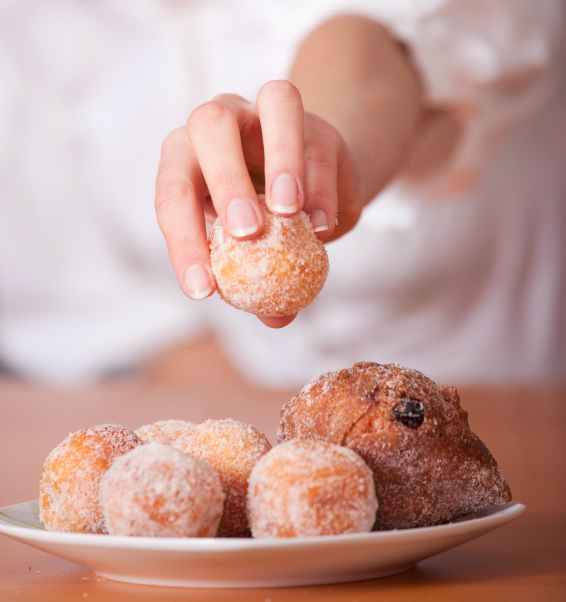
Lose the side tables
‘Move your side tables in the living room so they’re more than arm’s length away from where you sit,’ says Dr Wansink. While Dr MacGowan suggests making the sitting area a food-free zone, if that’s not practical, set food further away. ‘If you do take food in there make it inconvenient to get to and you’ll have less,’ says Dr Wansink. In one study involving secretaries Wansink’s researchers moved the sweets bowl only six feet away from them and they went from eating nine sweets a day to only four.
Switch off the telly
You may have heard this a hundred times but here’s why it works. ‘If we watch television when we eat, we eat to the pace of the show and this can mean tense and fast making weight gain more likely,’ says Dr Wansink. ‘We also lose track of how much we eat because we’re paying attention to the TV. It also creates ‘eating scripts’ where turn on the TV, start a movie and go get ice cream and the more often you do this, the more of a habit it becomes and before you know it, you’re associating any movie with ice-cream.’ Fix it by making sure food is less convenient (see above). Alternatively, have it but dish it into a small ramekin or cup to make you less likely to overeat it, he suggests.
The louder and faster the music, the more and faster you eat,
IN THE BEDROOM
Put your runners by the bed
If you’ve made a pact with yourself to exercise in the mornings, put your kit by the bed so its the first thing you see when you wake up. ‘This primes you to think about the exercise and the goal you have set, acting as a visual reminder,’ says Dr MacGowan. ‘Secondly, it makes it easier and ease is the key to making healthier habits’. If you have to run around trying to find your kit you’re adding another step to the process during which you’re more likely to opt out. If you’re a lunchtime or evening exerciser you can use this trick in the same way by keeping a prepped gym kit in the car or an extra one at work, MacGowan suggests.
IN THE BATHROOM
Get scales
We’re often told not to do it, but research from the US National Weight Control Registry found people who lost weight and kept it off weighed themselves regularly. ‘Self monitoring is one of the most important ways to lose weight and maintain the loss. The two best ways to do this are keeping a food diary and weighing yourself ideally once a day, in the morning, just after you have been to the loo and no less than once a week,’ says Dr MacGowan. ‘Keep the scales in the same place so it eventually becomes habit’
Like this article? Sign up to our newsletter to get more articles like this delivered straight to your inbox.



